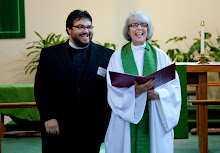I recently came across a document which wrongful claims that the fair linen is the most important of all church linens. I respectful disagree with this assertion and yield to the words of Dr. Richard Hoefler, the author of Designed for Worship.
"The corporal is considered by many scholars to be the oldest linen of the ancient church now in use. It symbolizes the grave cloth of Our Lord's entombment, and hence the sacrifice of Calvary." (Hoefler 39)
Some parishes lay the corporal out at all times on the altar which is poor practice. Quiet frankly, nothing should sit out on the altar when not in use for the sacrament. When the sacrament is being celebrated only those things necessary for the sacrament should be on the altar. All the vessels containing elements that is to be concreted – properly speaking – should be placed on the corporal. The corporal when not in use should be folded into nines and placed in a burse for protection. It should be washed like all church linens are and it should never be starched.
